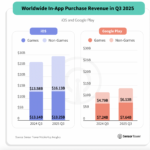Google has released a new guide detailing a five-level roadmap for Android developers aiming to improve app performance, from basic monitoring to building custom diagnostic systems. The framework, introduced during the company’s Performance Spotlight Week, breaks down the tools and practices available to teams at varying levels of technical maturity.
The guide highlights how developers can track stability issues, analyze slowdowns, and automate testing, as well as how new Android platform capabilities are reshaping the way performance is measured in live environments.
Baseline Monitoring: Developers Urged to Leverage Android Vitals First
The entry point of Google’s performance roadmap is Android Vitals, the Play Console’s field-monitoring dashboard. When users opt in, their devices automatically log performance events—such as crashes, ANRs, excessive battery drain, and wake lock behavior. Google aggregates and anonymizes these signals and surfaces the results through the console.
Core metrics include user-perceived crash rate, user-perceived ANR rate, excessive battery usage for Wear OS, and a newly added metric tracking excessive partial wake locks. Google notes that apps exceeding defined thresholds may face visibility impacts on Google Play, and stricter wake-lock enforcement begins March 1, 2026.
Through the Vitals interface, developers can drill into stack traces, inspect ANR patterns, and troubleshoot battery or wake-lock issues surfaced from real-world usage.
Standardized Scoring: Action Items via the App Performance Score
The second level in the framework centers on the Android App Performance Score, which assigns apps a 0–100 rating based on static and dynamic assessments.
The static component reviews configuration decisions—such as the use of the latest AGP version, adoption of R8 code optimization, Baseline Profiles, Startup Profiles, and current versions of Jetpack Compose. These provide low-effort improvements that do not require code-level rewrites.
The dynamic assessment introduces device-based measurement. Developers are asked to test their app on physical hardware, including lower-end devices, to capture real startup times, notification-triggered launch behavior, and scrolling performance. Combined, the two assessments identify the highest-impact optimization areas.
Automation: Local Test Frameworks Replace Manual Checks
As performance checks become more frequent, Google recommends developers move to automated testing using Macrobenchmark and UiAutomator. Macrobenchmark captures metrics such as startup time and frame pacing, while UiAutomator simulates user actions like launching the app or scrolling through lists.
The tools work together: UiAutomator drives the app’s UI, and Macrobenchmark measures the resulting performance. Developers can then analyze consistent results across iterations, replacing slower, less reliable manual stopwatch-based testing.
Advanced Diagnosis: Perfetto Provides System-Wide Tracing
Level four introduces Perfetto, Google’s system-level trace analysis tool, used when app-specific instrumentation can’t explain a slowdown. Perfetto captures entire device activity—from CPU scheduling to system services—offering visibility beyond standard Android debuggers.
The traces can be recorded from Developer Options, Android Studio, or the Perfetto UI, then loaded into a browser-based viewer. Google outlines common scenarios where system traces provide key insights: diagnosing jank caused by long UI thread operations, identifying system-level CPU contention, analyzing startup delays tied to Binder calls, and tracing background processes responsible for battery drain.
Custom Frameworks: Large Teams Can Build In-House Telemetry
Google’s highest performance tier is aimed at organizations capable of maintaining their own measurement infrastructure. The approach combines several Android platform APIs to collect production-level diagnostics across the app lifecycle.
- ApplicationStartInfo (Android 15+) records detailed startup behavior to help teams measure cold, warm, and hot starts using real user data.
- ProfilingManager (Android 15+) allows apps to trigger targeted system traces when slowdowns occur on user devices, helping capture issues that are difficult to reproduce locally.
- ApplicationExitInfo (Android 11+) surfaces reasons for unexpected process termination, including native crashes and out-of-memory kills, along with detailed tombstones.
Together, these tools enable custom telemetry pipelines for apps that require granular performance tracking across varied user conditions.
A Structured Path for Teams at Any Scale
Google’s framework presents a staged progression—starting with Play Console monitoring, then moving through standardized scoring, automated testing, system-level tracing, and finally custom instrumentation for mature engineering teams. The company says the multi-level approach reflects the wide gap between small app teams and large developers with dedicated performance engineering resources.






Comments
Loading…